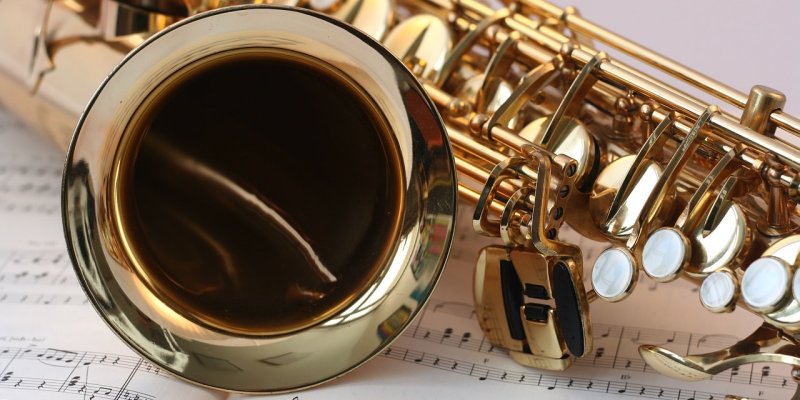
Some people think the saxophone instrument is classified as a brass instrument because it's made of brass. But, the saxophone is actually a single-reed woodwind instrument.
This is easy to confuse, so don't feel bad if you thought it was classified as brass!
The main reason for this is that the classification of instruments is not based on what it is made of, but on how it produces sound. To understand why it's a woodwind, let's briefly go over the body and construction of this lovely instrument.
Woodwind instruments span various octaves, offering a wide pitch range. From the piccolo's high-pitched melodies to the bassoon's deep and resonant tones, woodwinds cover a broad spectrum of pitches.
This range enables woodwind players to perform melodies, harmonies, and bass lines across different musical genres.
Adolphe Sax, a Belgium-born instrument designer during the 19th century, is one of the few inventors of instruments that were invented by one person and is still regularly used today.
The body is indeed made of brass, which is why many get the answer wrong when asked if it's a brass instrument.
Saxophones have a single-reed mouthpiece, just like a clarinet. Depending on the type of saxophone, the reed (made from cane) can vary in size to produce lower or higher sounds.
Splitting a stream of air over the reed is what produces sound in the form of vibration.
Related Post: 25 Fun And Interesting Facts About The Saxophone
Along with flutes, clarinets, oboes, and bassoons, saxophones are a member of the woodwind family. This family is often split up into two categories: flutes and reed instruments.
While flute instruments create sound from the user blowing into a hole, reed instruments produce sound from the mouthpiece. So despite the name, a woodwind instrument can be made out of anything, including brass or silver.
Reed instruments have two categories: single-reed and double-reed.
Single-reed instruments place the reed at the mouthpiece, while double-reed instruments have two pieces of reed (usually made of cane) that vibrate against each other at the edge of the instrument.
While clarinets and saxophones are common single-reed woodwinds, double-reed instruments include the bassoon and the oboe.
There are four popular saxophone types that most people have heard of before. You have the soprano sax, the alto sax, the tenor sax, and the baritone sax.
When Adolphe Sax invented the instrument in the 1840s, he had a vision of a full saxophone orchestra, which also included the sopranissimo sax, the sopranino, and the bass sax. These are hard to find, but not impossible!
Seven other types, including the Mezzo-Soprano sax, Contrabass C sax, Melody Slide Saxophone, Saxello, Connosax, and the Subcontrabass are pretty much obsolete, though.
Proper maintenance and care are crucial for all woodwind instruments to ensure optimal performance and longevity. Here are some general tips for maintaining woodwind instruments:
Regular cleaning is essential to remove moisture, dirt, and residue that can accumulate inside the instrument.
Use specialized cleaning tools such as cleaning swabs, brushes, and cleaning rods to clean the body, keys, and tone holes. Regular cleaning helps prevent build-up and keeps the instrument in good playing condition.
If you play a woodwind instrument with a reed, such as a clarinet or saxophone, it's important to care for the reeds properly.
Rinse the reeds with clean water after each use and allow them to dry before storing them in a reed case. This helps prevent warping and extends the life of the reeds. Rotate your reeds to ensure even wear and replace them when they become worn or damaged.
Related Post: All About The Contrabass Clarinet - An Epic Instrument
Schedule routine visits to a qualified instrument repair technician for maintenance and adjustments. They will check for leaks, regulate key mechanisms, and ensure proper alignment. Regular maintenance helps prevent issues and ensures that your woodwind instrument continues to play smoothly.
When not in use, store your woodwind instrument in a protective case to safeguard it from dust, temperature changes, and potential accidents.
Ensure that the instrument is properly assembled and disassembled to avoid damage to the keys, rods, and other delicate components. Also, avoid exposing the instrument to extreme temperature and humidity conditions.
You may be wondering what actually classifies as a brass instrument since the saxophone is not in that category.
Brass instruments like the tuba and the horn use valves or slides to change pitch, and their sound comes out at the end of the instrument. For woodwinds, the sounds come out of the many holes in the instrument.
Brass instruments are almost exclusively made out of brass.
It won't be confusing as it is sometimes with woodwind instruments unless you're digging deep into lesser-known instruments like the didgeridoo.
Other popular brass instruments include the trumpet, the trombone, and the mellophone.
Related Post: 3 Ways To Get Quality Saxophone Lessons

As a session singer, writer, and producer that has worked with over 300 clients to provide high-quality jingles, singles, and features, Yona spends her time creating and marketing new music and helpful resources for creators. Check out Yona’s latest releases on her Spotify, her Youtube and share if you like it!
If you are in need of singer, songwriter or song producer services, see what Yona Marie can offer you on her services page.